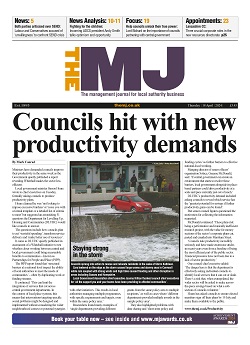Campaigners for an independent Scotland have long argued that financially the country could survive thanks to oil tax revenues, while opponents maintain that on the contrary its public services are subsidised by the rest of the UK. Latest figures give little joy to the independence movement.
Latest official figures from Government Expenditure and Revenue Scotland (GERS) show that the gap between tax revenues and spending in Scotland widened from 7.4% in 2018/19 to 8.6% of gross domestic product (GDP) in 2019/20 compared to a deficit of 2.5% of GDP for the UK as a whole.
The difference was due to a combination of a fall in North Sea oil revenues, an increase in public spending and a drop in other revenues like VAT, income and corporation tax. The gap is equal to £11bn, meaning that borrowing per head in Scotland is £2,776 compared to £855 across the UK as a whole. Scotland’s budget deficit has been higher than the UK’s since 2012/13. Total public sector expenditure for Scotland in 2019/20 is estimated to be £81bn, an increase of 3.1% from 2018/19, compared to growth of 3.5% for the UK, although as a proportion of GDP it rose due to weaker growth in Scotland.
The deficit is largely due to higher public spending in services devolved to the Scottish Government such as education (22% higher than the rest of the UK) and housing, transport and social care. Current spending on local government rose by 5.5% in the last year to £13.2bn. Social protection which includes pensions and benefits is the largest spending element in the Scottish budget. In the case of social care the allowances for carers, attendance and disability are all higher than the rest of the UK. The disability living allowance for 2019/20 was £147 per person in Scotland compared to £108 for the rest of Britain, £97 for the attendance allowance (£91 rest of Britain) and £51 for the carer’s allowance (£45 rest of Britain).
Tax revenues including North Sea oil are 2.5% below the UK average – though Scotland’s income is not the only part of the UK to lag behind for most of the UK’s tax revenue is generated in London and the South East. However when Scotland is compared to regions of England with similar levels of income such as the East or South West Scotland has higher levels of spending. The Institute for Fiscal Studies (IFS) says ‘this is a pattern that goes back decades and reflects the relatively generous levels of block grant for devolved services received by the Scottish Government’.
Non-North Sea revenue in Scotland is estimated to have grown by 15.3% between 2015/16 and 2019/20 in nominal terms, less than for the UK as a whole (15.9%). UK North Sea revenue was -£85m in 2015/16, with refunds of petrol revenue tax exceeding other tax receipts. It has since increased, reaching £1.2bn in 2018/19, but fell again in 2019/20.
Within the revenue total, non-domestic rates make up a relatively large share, as do taxes from tobacco and alcohol due to the higher levels of smoking and consumption of spirits. Non-North Sea revenue in Scotland is estimated to have grown by 15.3% between 2015/16 and 2019/20, less than for the UK as a whole (15.9%). Tax revenue devolved to the Scottish Government including council tax, non-domestic rates and landfill tax amounted to £17.7bn last year.
The Scottish Government’s borrowing powers are limited to £450m for capital investment and either £300m or £600m, depending on circumstances, to address volatility and forecast errors for devolved taxes. The Scottish Government argues the deficit proves it needs more powers over its income. Its finance secretary Kate Forbes says she will ‘continue to press for the Scottish Government to be granted additional financial powers to enable us to tailor a response that meets Scotland’s needs. Scotland, unlike most other countries around the world, large and small, does not currently have the full financial powers needed to chart a way to sustainable recovery from the economic impact of the pandemic.’
The figures include one month of lockdown, meaning the gap this year is likely to be even larger, with the IFS forecasting Scotland’s deficit at 28% though it says it will be even higher in Wales, Northern Ireland and England’s Midlands and the North.



